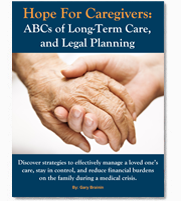Santa Clara Trust Lawyer on What to Know Before Naming a Trust as Your Retirement Account Beneficiary
 When planning for the future, one important decision is who will inherit your retirement accounts. While many people name individuals as direct beneficiaries, there are situations where a trust may be a better option. However, this approach requires careful planning to ensure compliance with federal and state laws while maximizing tax benefits.
When planning for the future, one important decision is who will inherit your retirement accounts. While many people name individuals as direct beneficiaries, there are situations where a trust may be a better option. However, this approach requires careful planning to ensure compliance with federal and state laws while maximizing tax benefits.
Why Consider a Trust as a Retirement Account Beneficiary?
Naming a trust as the beneficiary of your retirement account isn’t always necessary, but it can provide key benefits, such as:
- Protection for minor beneficiaries who cannot directly inherit assets
- Support for beneficiaries with disabilities without jeopardizing government benefits
- Control over how and when distributions are made to beneficiaries
- Protection from creditors, lawsuits, or divorce
- Professional management for beneficiaries who may lack financial experience
- Preservation of assets for multiple generations
While these advantages can be significant, using a trust as a beneficiary requires meeting strict legal and tax requirements.
Understanding “See-Through” Trusts
A trust is a legal relationship rather than an individual, which means it does not automatically qualify as a “designated beneficiary” under IRS rules. However, certain trusts can qualify as “see-through” trusts, allowing the IRS to treat individual beneficiaries as if they were directly named.
For a trust to qualify as a see-through trust, it must meet specific requirements:
- The trust must be legally valid under state law
- The trust must be irrevocable (or become irrevocable upon the retirement account owner’s death)
- The beneficiaries must be identifiable from the trust document
- The required documentation must be provided to the plan administrator, in a timely fashion, for employer-sponsored retirement plans
If these requirements are not met, the retirement account may be subject to accelerated distribution schedules, resulting in significant tax liabilities.
Conduit Trusts vs. Accumulation Trusts
See-through trusts can be further divided into two main types of trusts used as retirement account beneficiaries:
Conduit Trusts
A conduit trust requires the trustee to distribute all retirement account withdrawals directly to the trust beneficiaries. This structure allows the primary beneficiaries to be treated as direct heirs for distribution purposes.
Accumulation Trusts
An accumulation trust allows the trustee to retain retirement account distributions within the trust rather than passing them immediately to beneficiaries. While this provides more control and protection, both primary and contingent beneficiaries are considered when determining the trust’s distribution rules under IRS guidelines. Additionally, retained funds may be subject to higher trust income tax rates.
2025 Retirement Account Rule Changes
The IRS released new Required Minimum Distribution (RMD) regulations in 2024, which took effect on January 1, 2025. These rules introduced key changes for trusts named as retirement account beneficiaries:
- Separate accounting is now allowed for see-through trusts with multiple beneficiaries, meaning each beneficiary may have their own distribution schedule.
- Documentation requirements have been eliminated for trusts named as IRA beneficiaries, though employer-sponsored retirement plans (such as 401(k)s) still require documentation.
- Different rules apply depending on whether a beneficiary qualifies as an Eligible Designated Beneficiary (EDB)—who may use a stretch provision—or a Non-Eligible Designated Beneficiary (NEDB)—who must generally withdraw funds under the 10-year rule.
These changes affect estate planning strategies, making it even more important to structure trusts correctly.
Why Professional Guidance Matters
Naming a trust as the beneficiary of a retirement account is a complex decision that involves both estate planning and tax implications. Laws and regulations vary by state, and financial institutions may have specific requirements regarding trust beneficiaries.
Working with a Santa Clara trust lawyer can help ensure that your trust is structured correctly to:
- Align with the latest federal and state laws
- Maximize tax efficiency
- Protect beneficiaries while maintaining flexibility
If you are considering naming a trust as the beneficiary of your retirement account, our experienced Santa Clara trust lawyers can guide you through the process and create a customized estate plan that aligns with your financial goals.
Schedule a Consultation Today
To learn more about your estate planning options, contact our firm at 408-889-1290 to schedule a consultation. Our team is here to help you make informed decisions to protect your legacy and your loved ones.






